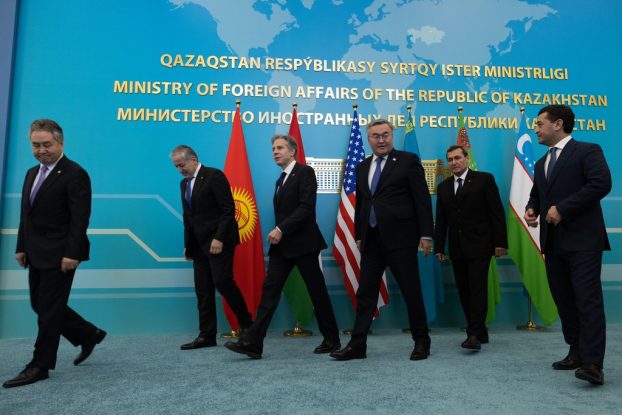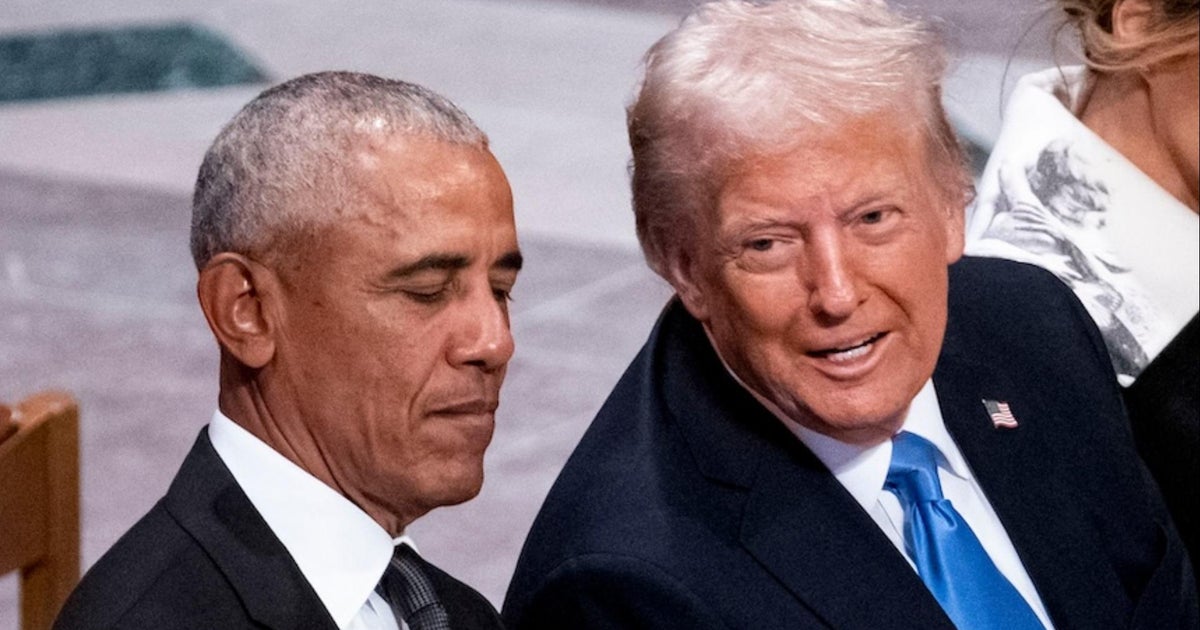Trump’s Antarctica Gambit: Unpacking the Geopolitical Iceberg
The vast, white expanse of Antarctica, once perceived as a remote scientific frontier, is increasingly becoming a focal point of global geopolitical intrigue. While the Arctic has recently garnered significant attention, particularly with discussions around Trump’s Arctic ambitions and the geopolitical tussle over Greenland, the frozen continent at the bottom of the world also warrants a closer look. As Donald Trump signals a potential return to the White House, the implications for U.S. policy in both polar regions are substantial, prompting a critical examination of what a renewed Trump presidency might mean for Antarctica’s future. This is not just about science budgets; it’s about sovereignty, resource potential, and the delicate balance of international cooperation that has governed the continent for decades.
The Antarctic Treaty System: A Foundation of Cooperation
For over sixty years, the Antarctic Treaty System (ATS) has been the bedrock of governance for Antarctica. Signed in 1959, it designates the continent as a zone of peace and scientific cooperation, prohibiting military activity and mineral exploitation. This visionary framework has allowed nations to conduct invaluable research, unhindered by territorial disputes.
- Key Pillars of the ATS:
- Peaceful Purposes Only: Military activities are banned.
- Freedom of Scientific Investigation: Encourages research and data sharing.
- Freedom of Cooperation: Fosters international collaboration.
- Prohibition of Mineral Exploitation: The Protocol on Environmental Protection to the Antarctic Treaty (Madrid Protocol) currently bans mining.
However, the growing global interest in Antarctica’s untapped resources and strategic location, coupled with shifting geopolitical landscapes, places the ATS under increasing pressure.
Trump’s Polar Policy: A Glimpse from the Past and Present
While the Trump administration was notably vocal about the Arctic, its engagement with Antarctica was less pronounced but still significant. Reports from 2025 indicated proposed cuts to U.S. science budgets, potentially impacting crucial Antarctic research programs. This suggests a possible shift in priorities, moving away from the pure scientific focus towards a more strategic or resource-oriented approach, a pattern observable in his discussions around the Arctic.
- Arctic Echoes in Antarctic Considerations:
- Resource Potential: Melting ice caps in both regions expose vast reserves of natural resources, attracting the interest of global powers. The Arctic’s burgeoning mining opportunities and shipping routes have been explicitly linked to Trump’s interest in Greenland. Similar resource potential exists in Antarctica, though its exploitation is currently constrained by international agreements.
- Sovereignty and Influence: Trump’s previous overtures, like the proposal to buy Greenland, highlight a willingness to challenge existing norms and pursue strategic acquisitions to bolster U.S. influence. While direct acquisition of Antarctic territory is complicated by the ATS, a focus on asserting greater U.S. presence and control over key areas is conceivable.
- Relationship with Russia: The observed “growing rapport with Russian President Vladimir Putin” in the context of polar realignment could have implications for Antarctica. Russia, along with other nations, maintains a significant scientific and logistical presence on the continent. Any shifts in U.S.-Russia relations, particularly regarding shared strategic interests, could reshape the dynamics of Antarctic governance.
Unpacking the Geopolitical Iceberg: Potential Shifts Under a Second Trump Term
A second Trump presidency could introduce significant volatility to the established order in Antarctica. The core question for many analysts is whether a second Trump administration will seek to uphold or reinterpret the existing Antarctic Treaty System.
H3: Resource Exploitation and the Madrid Protocol
The current ban on mineral exploitation, enshrined in the Madrid Protocol, is a major point of contention for nations viewing Antarctica through a resource lens.
- The Temptation of Riches: Antarctica is estimated to hold significant reserves of oil, gas, and minerals. As global resource scarcity intensifies, the temptation to revisit the mining ban will likely grow. A Trump administration, with its emphasis on resource extraction and economic growth, might be inclined to explore avenues for challenging or withdrawing from the Protocol, potentially sparking intense international debate and conflict.
- The Economic vs. Environmental Divide: This creates a clear division: nations prioritizing scientific research and environmental protection will fiercely defend the Protocol, while those eyeing economic gains will likely advocate for its renegotiation or abandonment.
H3: Sovereignty Claims and Strategic Presence
While the ATS freezes territorial claims, several nations have historical claims to portions of Antarctica. A more assertive U.S. foreign policy could involve a renewed focus on asserting American interests and presence, potentially in ways that challenge the spirit of the Treaty.
- Increased Military/Logistical Footprint: This doesn’t necessarily mean overt militarization, but rather an enhancement of logistical capabilities, potentially including dual-use infrastructure. This could be framed as supporting scientific endeavors but might be viewed by other nations as an assertion of strategic dominance.
- Navigating the Legal Labyrinth: The legal framework of the ATS is complex, and any attempt to undermine its foundational principles would be met with fierce opposition. However, a U.S. administration less concerned with multilateral norms could explore interpretations that favor national interests.
H3: The Role of Science and International Cooperation
Perhaps the most vulnerable aspect of the ATS under potential future shifts is the commitment to scientific cooperation.
- Budgetary Impacts: As seen with potential budget cuts, a de-emphasis on scientific funding could cripple research operations. This would not only hinder our understanding of climate change but also weaken the collaborative ethos that defines Antarctic science.
- Diminished Data Sharing: If national interests begin to dominate, the open sharing of scientific data could be curtailed, impacting global climate research and our ability to address pressing environmental challenges.
Navigating the Antarctic Ice: What You Need to Know
For those tracking global geopolitical shifts, understanding Trump’s Antarctica gambit involves looking beyond overt pronouncements and analyzing policy trends. The future of this pristine continent hinges on the choices made by its governing nations, particularly by major players like the United States.
Actionable Takeaways:
- Stay Informed: Continuously monitor U.S. policy statements and budgetary allocations concerning scientific research and polar regions.
- Understand the Antarctic Treaty System: Familiarize yourself with its principles and the challenges it faces. This knowledge is crucial for discerning potential policy shifts.
- Observe International Reactions: Pay attention to how other nations, particularly those with significant Antarctic interests (e.g., Argentina, Australia, Russia, China), respond to U.S. policy adjustments.
- Connect the Polar Dots: Recognize that policies enacted for the Arctic can often foreshadow or influence approaches to Antarctica, particularly concerning resource development and strategic positioning.
The geopolitical iceberg of Antarctica is complex, with much of its significance hidden beneath the surface. As the world navigates a period of geopolitical flux, the decisions made regarding this unique continent will have profound implications, not just for scientific discovery, but for international law, environmental stewardship, and the very nature of global cooperation. The question isn’t if Antarctica will be a subject of geopolitical attention, but rather what form that attention will take, and how the established order will weather the potential storms.
Additional Information
Trump’s Polar Gambit: Unpacking the Geopolitical Iceberg in the Arctic and Antarctic
Donald Trump’s foreign policy often defies conventional diplomatic norms, and his approach to the Earth’s polar regions is no exception. While the term “Antarctica Gambit” might evoke images of strategic maneuvers on the icy continent, the real geopolitical play, as illuminated by recent events and analyses, largely centers on the Arctic, with significant implications for Antarctica. Trump’s potential return to the White House heralds a renewed focus on these critical, resource-rich, and increasingly accessible regions, potentially reshaping global power dynamics.
The Arctic: A Warming Frontline of Geopolitical Tension
The Arctic is no longer a remote, frozen frontier but a rapidly warming region at the forefront of geopolitical competition. As melting ice caps expose vast reserves of natural resources (Averre and Salvoni, 2025), the strategic importance of the Arctic has escalated dramatically. This presents a complex landscape where climate change intersects with economic opportunity and national security.
Trump’s Greenland Ambition: A Recurring Theme:
A significant manifestation of Trump’s Arctic focus was his highly publicized proposal to buy Greenland from Denmark in August 2019. While initially met with skepticism and even ridicule, this “Greenland gambit” was more than just a headline-grabbing stunt. It reignited a historical debate and unequivocally spotlighted Greenland’s growing geopolitical significance (chinaus-icas.org). The idea has been reignited by President-elect Trump in January 2025, sparking immediate opposition from EU leaders, Greenlandic officials, and analysts. This renewed interest underscores a deeper ambition for Arctic sovereignty, security, and geopolitical leverage.
Motivations Behind the Arctic Play:
Several factors likely drive Trump’s interest in the Arctic:
- Resource Exploitation: The melting Arctic ice is unlocking access to significant reserves of oil, gas, minerals, and rare earth elements. Trump’s transactional approach to foreign policy suggests a strong interest in securing access to these valuable resources for the United States. As highlighted, climate opportunities in Greenland, particularly potential mining ventures, may be a key part of Trump’s interest (scientificamerican.com).
- Strategic Dominance and Security: The Arctic is also becoming a crucial theater for military operations and naval passage. The opening of new shipping routes, such as the Northern Sea Route, significantly shortens transit times between Europe and Asia. A stronger U.S. presence in Greenland, a strategically located territory, would bolster American influence and potentially counter the growing Arctic ambitions of other powers, notably Russia and China.
- Polar Realignment and the Putin Factor: Trump’s potential second term is viewed by some as potentially ushering in a “polar realignment,” with his growing rapport with Russian President Vladimir Putin potentially signaling a new strategic shift in the Arctic (thegeopolitics.com). This could involve a re-evaluation of existing Arctic governance structures and a potential for bilateral agreements that bypass multilateral frameworks.
Challenges and Opposition:
Trump’s Arctic ambitions are not without significant hurdles. The opposition from EU leaders, Greenlandic officials, and analysts to the renewed Greenland interest (europrospects.eu) reflects concerns about:
- Sovereignty: Greenland, while part of the Kingdom of Denmark, has a significant degree of self-governance and has expressed a desire for greater autonomy. The idea of being “bought” is likely to be met with strong resistance.
- Environmental Concerns: Increased resource extraction and shipping in the Arctic raise substantial environmental concerns, given the fragile polar ecosystem.
- Multilateralism: The Arctic is governed by a framework of international cooperation, including the Arctic Council. Unilateral actions or bilateral deals that undermine this framework could lead to instability.
Antarctica: A Different Kind of Polar Focus
While the Arctic garnishes more direct geopolitical maneuvering from Trump, his return to the White House will have a significant effect on U.S. policies in the Antarctic as well (csis.org). Antarctica, however, operates under a different paradigm. It is an internationally recognized continent dedicated to peace, science, and cooperation, governed by the Antarctic Treaty System.
The Shadow of Budget Cuts:
During Trump’s previous presidency, there were concerns about proposed cuts to the U.S. Antarctic Program’s science budget. The “Antarctica Faces Tense Future as U.S. Science Budget Shrinks” (nytimes.com) headline from July 2025 reflects this, indicating that proposed funding cuts in the Trump administration, alongside actions by other world powers, may alter the environment of scientific research and cooperation on the continent.
Potential Impacts on Antarctic Governance:
While a direct “Antarctica Gambit” in the same vein as Greenland is unlikely, potential impacts from a second Trump administration could include:
- Reduced Investment in Scientific Research: A diminished U.S. commitment to Antarctic science could weaken the very foundation of the continent’s governance and our understanding of its critical role in global climate systems.
- Shifting Diplomatic Priorities: A more transactional foreign policy might lead to a de-prioritization of the long-term, collaborative approach that has characterized U.S. engagement with Antarctica. This could create opportunities for other nations to increase their influence or push for changes to the existing treaty system.
- Impact on Environmental Protection: The Antarctic Treaty’s Protocol on Environmental Protection is crucial for safeguarding the continent. Any weakening of U.S. commitment to multilateral environmental agreements could have ripple effects.
The Geopolitical Iceberg: A Deeper Analysis
Trump’s interest in the polar regions represents more than just a desire for resources or strategic locations. It is a reflection of a broader approach to global affairs that prioritizes national interest, transactional deals, and a willingness to challenge established international norms.
- The Arctic as a Gateway: The Arctic is increasingly seen as a new frontier for global power competition. Trump’s focus on acquiring Greenland and his potential alignment with Russia signal a recognition of this shift and a desire to shape the future of Arctic governance to U.S. advantage.
- Antarctica as a Bellwether: While less directly contested, U.S. policy towards Antarctica can serve as a bellwether for its commitment to multilateralism and scientific cooperation. Reductions in funding or a shift in diplomatic focus could signal a broader retreat from these principles.
- The Interconnectedness of Polar Regions: The warming of the Arctic has profound implications for global climate systems, which in turn affect Antarctica and the rest of the planet. Trump’s policies, whether focused on resource extraction or scientific funding, will have far-reaching consequences for both polar regions and the global environment.
In conclusion, “Trump’s Polar Gambit” is a multifaceted strategy that primarily targets the strategically vital and resource-rich Arctic, with the potential to indirectly influence the future of Antarctic cooperation and governance. As the geopolitical landscape continues to shift, the icy frontiers of the North and South Poles are poised to become even more critical arenas for international relations, and Donald Trump’s approach will undoubtedly play a significant role in shaping their future.





Leave a Reply